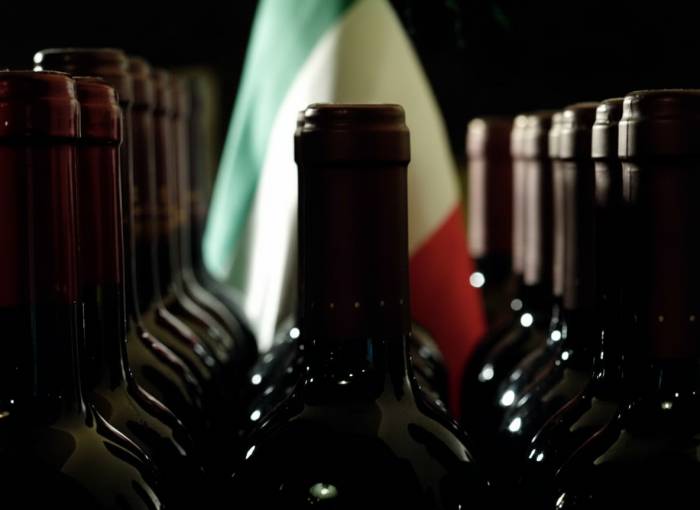Italian Wine Exports Reach €8.1 Billion in 2024 With 21.7 Million Hectoliters Shipped
Italian wine exports hit record highs in 2024
2025-10-02

Italian wine exports have reached a new high in 2024, with sales abroad totaling 8.136 billion euros, a 5.5% increase over the previous year. Italy shipped 21.7 million hectoliters of wine to foreign markets, maintaining its position as the world’s leading exporter by volume and second only to France in value, according to data from Vinetur. The United States remains the top destination for Italian wines, accounting for nearly 2 billion euros in imports and showing a growth of 10.2% compared to 2023.
Despite these strong numbers, the sector faces significant challenges. In August 2025, the U.S. government imposed a 15% tariff on European wines and spirits. This measure is expected to reduce annual revenues by more than 300 million euros for Italian producers, with Prosecco, Pinot Grigio, and Tuscan reds among the most affected categories. Industry experts say that these tariffs are not just about higher prices for American consumers but also force Italian wineries to rethink their logistics, profit margins, and commercial strategies.
Valerio Mancini, director of the Research Center at Rome Business School, notes that Italian wine is experiencing a period of contradiction: record-breaking export figures on one side and growing threats from international markets on the other. He points out that companies must now consider either redesigning their presence in the U.S. or diversifying into new markets.
In response to the tariffs, many Italian producers are increasing their focus on alternative destinations such as Canada, which saw a 15.3% rise in imports of Italian wine, Russia with a 40% increase, and several countries in Latin America and Asia. E-commerce is also becoming more important; global online wine sales are projected to reach $6.7 billion in 2025 according to Wine Intelligence.
Domestically, Italy’s wine production rebounded in 2024 after a difficult previous year marked by a 12% drop due to adverse weather conditions. Production climbed back up to 48 million hectoliters, a 13% increase from last year and close to the ten-year average. Italy now has about 720,000 hectares of vineyards—10% of the world’s total—putting it alongside Spain and France as global leaders.
Sustainability is another area where Italy stands out. The country leads Europe in organic vineyards with 133,000 hectares certified organic, representing 23% of its total vineyard area. Tuscany and Sicily have some of the highest shares of organic vineyards at 40% and 36%, respectively. Many wineries are investing in regenerative viticulture practices and planting grape varieties that are more resistant to climate change.
The Italian domestic market remains stable with an apparent consumption of about 22 million hectoliters and an average per capita consumption of nearly 38 liters per year. However, there is a shift in consumer preferences: only 29% of Italians over age eleven drink wine daily, while interest grows in white wines, rosés, sparkling wines, and low- or no-alcohol options—a segment that currently represents just under 1% of total volume but is expected to grow by 20% cumulatively by 2029.
Quality continues to drive export growth. In 2024, wines with protected designation of origin (DOP) accounted for 68% of export value while sparkling wines made up another 29%. Prosecco DOC remains a key player, making up about a quarter of national DOP production and recording a notable increase in U.S. sales last year.
Wine tourism is also booming in Italy. The sector generated nearly 3 billion euros in revenue in 2024 and attracted more than 15 million visitors—a rise of 11% over the previous year according to ISMEA data. Wine tourists tend to spend about one-third more than traditional tourists as they seek immersive experiences such as guided tastings, gourmet meals at wineries, cultural visits, and purchases of local products. While classic regions like Chianti, Langhe, and Prosecco remain popular destinations, new areas such as Badesi in Sardinia are seeing significant growth in visitor numbers.
The Italian wine industry faces ongoing pressure from climate change as well. Earlier harvests, lower yields, and water stress are forcing producers to adapt quickly by experimenting with new grape varieties and sustainable farming methods.
Looking ahead, industry leaders believe that innovation will be crucial for maintaining Italy’s global standing while preserving its unique identity. Digitalization is playing an increasingly important role through automation, cloud platforms for customer management, and artificial intelligence tools for marketing.
As global events continue to reshape trade dynamics and climate patterns alter agricultural practices, Italian wine producers are focusing on sustainability initiatives and market diversification as key strategies for future growth.
Founded in 2007, Vinetur® is a registered trademark of VGSC S.L. with a long history in the wine industry.
VGSC, S.L. with VAT number B70255591 is a spanish company legally registered in the Commercial Register of the city of Santiago de Compostela, with registration number: Bulletin 181, Reference 356049 in Volume 13, Page 107, Section 6, Sheet 45028, Entry 2.
Email: [email protected]
Headquarters and offices located in Vilagarcia de Arousa, Spain.